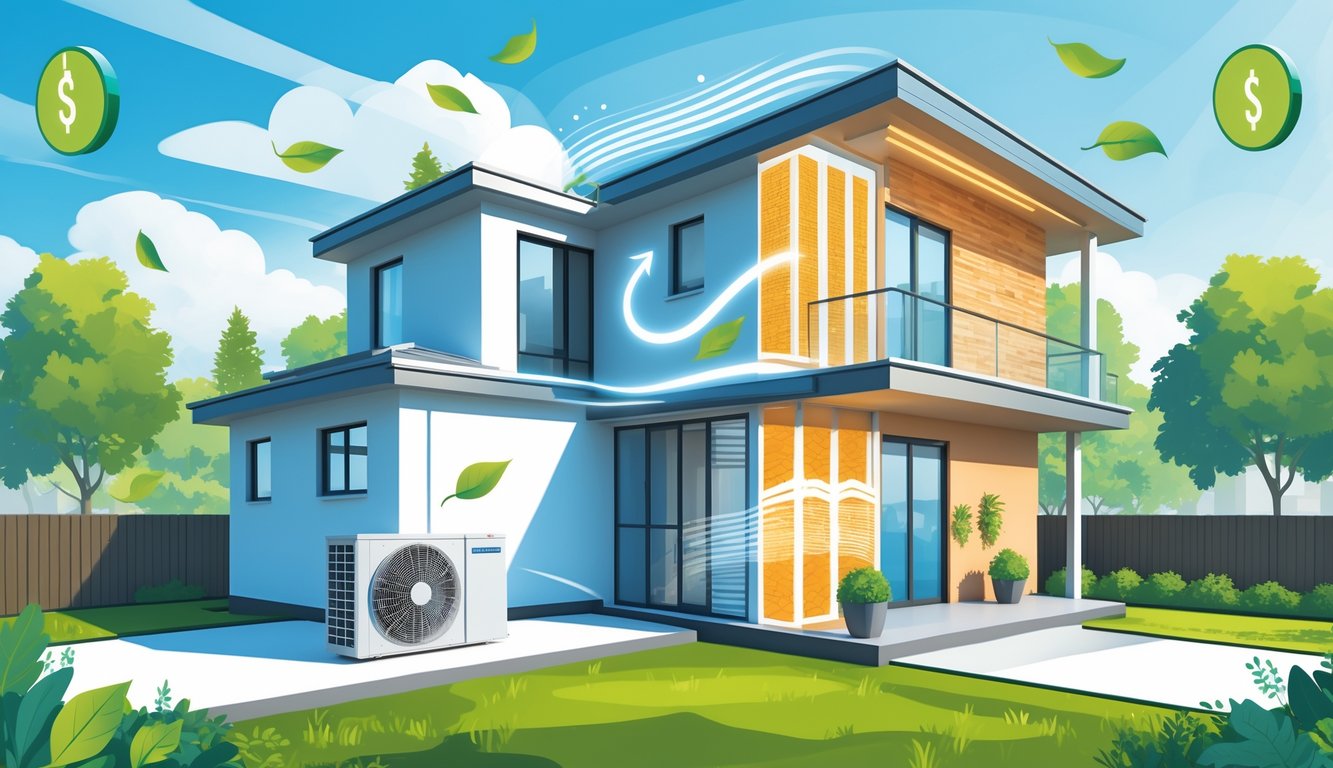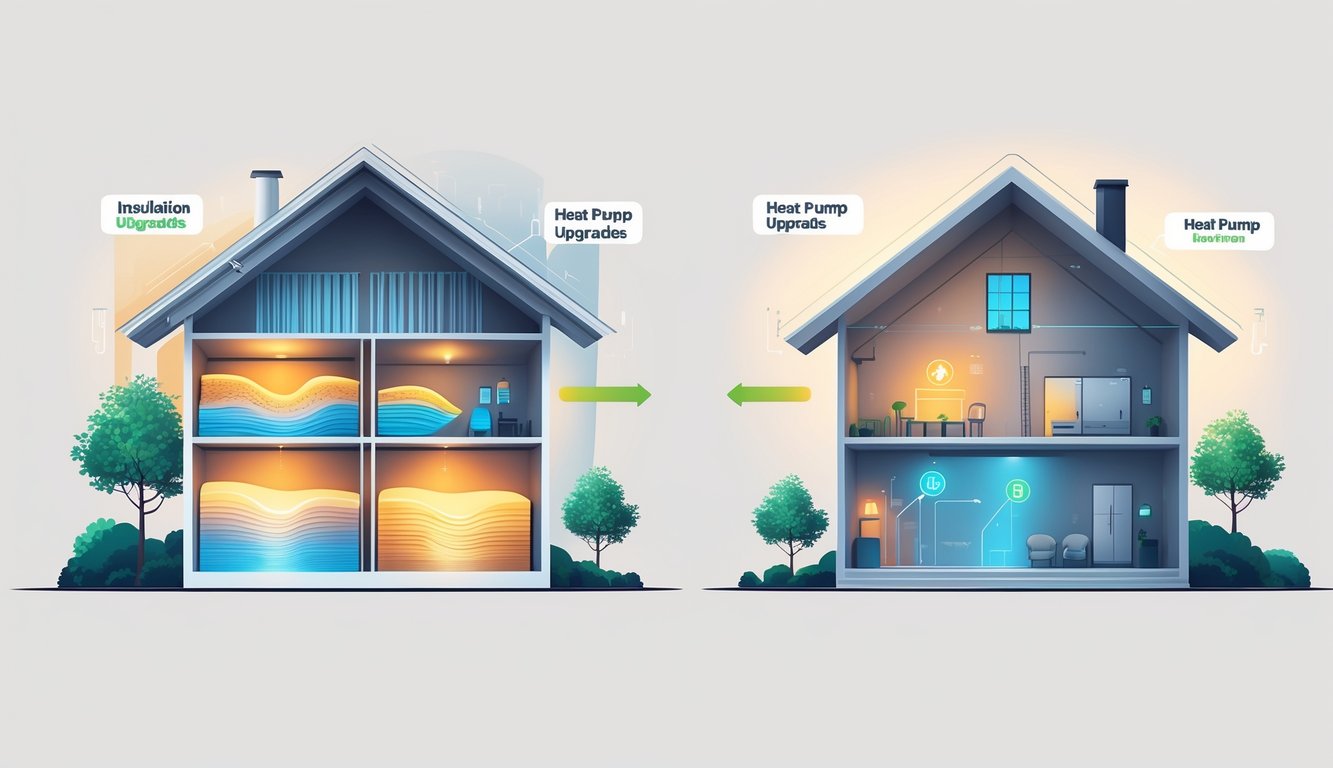
Insulation Versus Heat Pump Upgrades: A Detailed Cost Comparison

Nobody warned me how messy retrofits get—one minute I’m comparing insulation R-values, the next I’m staring at heat pump payback spreadsheets. Install costs are all over the place, and operating costs? Never what the brochures say. If you’re actually trying to save money, figuring out what’s going to hit your wallet first—upfront hardware or slow-drip utility bills—never lines up as neatly as the sales pitch.
Upfront and Installation Costs
Honestly, trying to budget for insulation or heat pumps is like shopping with no price tags. I’ve seen insulation jobs run $2,500–$7,000, but if your house is weird or old, it goes up fast. Attic-only jobs bounce all over the place, depending on where you live and what you use.
Heat pump installers throw out numbers like confetti—$3,000 to $5,000 for basic ductless, then suddenly $7,000 for whole-house? And don’t forget, if your electric panel is ancient or your ductwork is a disaster, you’re paying extra. Rebates? Sometimes, but never a guarantee. I read somewhere (here) that heat pump install costs look worse than insulation, but only if you ignore all the envelope work you’ll need anyway—which most people do, until it bites them.
You’d think energy-efficient windows would be a simple add-on, but nope—those prices explode if you trip a building code check. My neighbor’s “energy audit” turned into a window money pit.
Long-Term Financial Impact
Operating costs are a trip. Insulation smooths out the temperature swings, so your bill dips a little, but it’s not dramatic. The flyers say 10–20% off your bill with insulation, but honestly, I can’t tell at my place. Drafts gone, sure, but the savings don’t show up like magic.
With a high-efficiency heat pump, suddenly the numbers get specific—recent data says you can save up to 50% a year versus oil or propane. GreenBuildingAdvisor compared oil at 87% efficiency to a ductless heat pump, and oil nearly doubled the cost to run. But here’s the catch: if your house leaks air, don’t expect miracles. Some rebate programs even require you to insulate first (see EnergySage), so you can’t just skip envelope upgrades and expect the savings.
Wildest thing? If you cheap out on insulation and just buy the fanciest heat pump, you end up with a giant system, still cold, and still paying more than you should. People call me all the time wondering why their bills didn’t drop, and honestly, it’s usually because their house is still a sieve. The math never adds up if you’re leaking air, no matter what the brochure says.
Tax Credits and Financial Incentives for Heat Pump Upgrades
So yeah, it’s not just “throw some insulation in the attic and call it a day.” Honestly, I can’t keep up—federal and local heat pump incentives just keep multiplying, and meanwhile, people still talk about air sealing like it’s the moon landing. I spent last tax season toggling between IRS forms and Energy Star checklists, half-convinced I’d mess it all up and get audited for buying a mini-split.
Federal Tax Credits and Rebates
Let’s be real: nobody expects a tax credit to change their life, but the Inflation Reduction Act? That thing quietly flipped the script. The Energy Efficient Home Improvement Credit (yeah, Section 25C, for the IRS nerds) suddenly covers 30% of what you spend on a qualified heat pump—up to $2,000 per year. You don’t even have to do all the upgrades at once. The old $300 credit? A joke in comparison.
There’s also the Residential Clean Energy Credit (Section 25D), but unless you’re building a solar-powered yurt, heat pumps just live under 25C. And get this: upgrades and replacements count, as long as you hit the high-efficiency CEE tier at install. The IRS even says you can stack that $2,000 heat pump credit with $1,200 in other home upgrades in the same year. Why did nobody ever tell me that? The paperwork is still a headache, though. That part never gets better.
Local Incentives for Homeowners
I missed my state’s rebate mailer by, like, six days, and now my neighbor’s bragging about his $1,500 rebate for a ductless mini-split (thanks, Furnace Outlet). These programs just change whenever they feel like it, so good luck figuring out which ones overlap or vanish overnight.
Some utilities chop another $500 or $1,000 off at install. There are Weatherization Assistance Programs, but only if your income is low enough—and stacking rebates with federal credits is basically HVAC extreme couponing. Most incentives quietly shut out people with old electrical panels or weird home layouts. Maybe you’ll find a nonprofit offering “technical assistance,” but when you call, it’s a voicemail from last July. I’m not even sure anyone checks it.
Energy Efficiency and Comfort in Modern Homes
Does anyone else notice how the air in some rooms is just… off? Like, one room’s a sauna, the next is the North Pole. Supposedly, “smart” upgrades fix this, but after four app downloads, I still can’t sync the thermostat. Heat pumps get hyped everywhere, and insulation’s just sitting there, silent, like it’s above all this. I’ve tried stuff, read the PDFs, and I’m still not sure half of it matters.
Maintaining Year-Round Comfort
All I want is a bedroom that isn’t freezing and a living room that doesn’t pretend to be a meat locker. Space heating is the only real argument in my house (unless you count the windows that “let in the view” and all the drafts). My neighbor, who used to swear by wool socks and “just opening a window,” finally caved and got a heat pump. Now he’s stopped complaining—like, actually stopped. I polled my family group chat. It’s science.
I used to crank the thermostat just to fix cold spots—didn’t help. Heat pumps, with those inverter compressors (which sound fancier than they look), actually spread heat around. They’re supposed to be three times as energy efficient as my old boiler, if you believe Energy Efficient Home. The low hum? It’s there, but it’s better than the old system’s clunking. I’ll take a little background noise over waking up shivering. Also, my socks still vanish in the laundry, so clearly technology has limits.
Making Homes More Energy Efficient
Spilled coffee on my bill in January—almost fainted. That’s when I checked how much insulation vs. a new heat pump would save. Turns out, heat pumps win now, especially with the government dangling a £7,500 grant for qualifying installs (Energy Efficient Home). Triple-glazed windows are nice, but the real leap comes from a heat pump that, per Energy Saving Trust, can slash emissions and play nice with smart tariffs.
Insulation helps, but the big gains come from combos—heat pump plus insulated walls and energy-efficient windows. My own “experiment” (messy notes, coffee stains, regrets) cut my winter electricity use by 35% after switching over. New windows alone didn’t do that. My cat still naps by the radiator that’s not even on, so who knows what’s really going on.